Did you know that omega-3 deficiency can be deadlier than eating too much trans-fats? Last month’s Research News section offered this interesting finding from the Harvard School of Public Health, in which researchers found that getting too few dietary omega-3s accounted for 72,000–96,000 preventable deaths in the United States in 2005 (see August issue, page 10).
The reason why, says Marci Clow, senior director of product research for Rainbow Light Nutritional Systems, Santa Cruz, CA, may be the link between omega-3s and inflammation (which is a factor in many chronic conditions like cancer, heart disease and diabetes). “Omega-3 fatty acids can act as precursors to various hormones that help the body keep chronic inflammation at lower levels, thereby helping to prevent many chronic diseases…Something as simple as supplementing with omega-3s could prevent nearly 100,000 deaths a year.”
Given this, it’s important for retailers to have the facts straight on this “o-mazing” nutrient.
The Basics
This audience of educated readers knows that omega-3 deficiency is all-too common among Americans, and the consumption of certain essential fatty acids is way out of whack with others. But before proceeding, let’s quickly review some omega basics.
 Fatty acids are made of chains of carbon, hydrogen and oxygen atoms that have long, fatty tails.
Fatty acids are made of chains of carbon, hydrogen and oxygen atoms that have long, fatty tails.
- Chains with straight tails and no double bonds are saturated fatty acids.
- Chains with one double bond, such as omega-9, are monounsaturated fats (MUFAs).
- Chains with several double bonds are polyunsaturated fats (PUFAs).
Omegas-3 and -6 fall in this category and are considered essential fatty acids (1). Udo Erasmus, author, EFAs educator, and developer of healthy oils (such as those from Flora, Inc., Lynden, WA) helps us understand this term: “‘Essential’, in nutrition, is defined to mean any atom or molecule that cannot be made in the body, is required for life and for health, and must therefore be brought in from outside the body…Insufficient intake of any ‘essential’ nutrient results in deficiency symptoms that are degenerative in nature, and get worse with time.”
We can break down the omegas category even further. Omega-3 alpha linolenic acid (ALA) is metabolized into eicosapentaenoic acid (EPA) and docosahexaenoic acid (DHA). This trio is known for its powerful anti-inflammatory characteristics, which will be fully discussed later (1).
Omega-6’s parent fatty acid is linoleic acid (LA), which is common in our diets via several plant-based oils (soy, canola, sunflower, etc.). LA can convert into gamma-linolenic acid (GLA, found in borage, primrose and blackcurrant seed oils), which then can break down into arachidonic acid (AA, found in meats).
These omegas tend to get a bad rap because they are abundant in our diet and are said to be inflammation promoters. “Some experts have raised the hypothesis that higher intake of omega-6 fats could pose problems, cardiovascular and otherwise, but this has not been supported by evidence in humans,” says Clow, noting the Health Professionals Follow-up Study found an imbalanced ratio of omega-6 to omega-3 fats wasn’t linked with heart disease risk because both are beneficial to heart health. Evidence suggests omega-6 fats also support skin health and other conditions.
“[Omega-6s] help make our blood ‘sticky’ so it is able to clot,” says Clow. “My opinion is that when omega-6s aren’t balanced with sufficient amounts of omega-3s, problems can ensue. When blood is too ‘sticky,’ it can promote clot formation, which can increase the risk of cardiovascular issues. But once you add omega-3s to the mix, the risk of heart problems goes down.”
Unfortunately, says Cam Kupper, vice president of operations at Bioriginal Food & Science Corp., Saskatoon, SK, Canada, omega-6 fatty acids are somewhat misunderstood. “In your diet, you get a lot of omega-6, but often not the right mix of omega-6. GLA, an important omega-6 fatty acid, often gets lumped into that ‘don’t eat as much’ category…when it is a critical fatty acid.”
 For example, GLA may reduce inflammation and when taken as a supplement, it doesn’t convert to AA; rather, it breaks down into dihomma-gamma linolenic acid (DGLA) (2). DGLA is said to prevent the negative inflammatory effects usually caused by AA. GLA, therefore, has much research support for benefiting those with nerve pain caused by diabetes, dry eye, menopausal symptoms, bone loss (may enhance calcium absorption), eczema, allergies, rheumatoid arthritis, high blood pressure and other conditions. And, new data from U.C. Davis indicates that GLA-rich borage oil helps prevent weight rebound in dieters. “What they wanted to do was look at the performance of GLA after people had lost a significant amount of weight,” says Kupper. “The GLA addition to the diet versus the placebo reduced the weight regain to about two pounds. With the placebo, it was over 10 pounds…The mechanism of action isn’t well understood, but it’s been demonstrated in a number of studies over the last 20 years.”
For example, GLA may reduce inflammation and when taken as a supplement, it doesn’t convert to AA; rather, it breaks down into dihomma-gamma linolenic acid (DGLA) (2). DGLA is said to prevent the negative inflammatory effects usually caused by AA. GLA, therefore, has much research support for benefiting those with nerve pain caused by diabetes, dry eye, menopausal symptoms, bone loss (may enhance calcium absorption), eczema, allergies, rheumatoid arthritis, high blood pressure and other conditions. And, new data from U.C. Davis indicates that GLA-rich borage oil helps prevent weight rebound in dieters. “What they wanted to do was look at the performance of GLA after people had lost a significant amount of weight,” says Kupper. “The GLA addition to the diet versus the placebo reduced the weight regain to about two pounds. With the placebo, it was over 10 pounds…The mechanism of action isn’t well understood, but it’s been demonstrated in a number of studies over the last 20 years.”
The Great Debate
So, we know that our bodies need various essential fatty acids. But what isn’t as clear is how much and, importantly, in what proportion. Says Steve Holtby, president and CEO of Soft Gel Technologies, Inc., “The ratio of omega-6/omega-3 fatty acids in today’s Western diet is estimated to be more than 10:1, with some estimates as high as 30:1. Our diet now includes huge amounts of oils that are extracted from plants and used for cooking or in prepared foods. These oils are primarily omega-6s. We have decreased our intake of omega-3s, found primarily in whole grains, beans and other seeds, and seafood.”
 Given the dominance of omega-6s in the American diet, it’s important to shoot for better proportionality. Says Dan Murray, vice president of business development at Xsto Solutions, LLC, Morristown, NJ, “Excess of some nutrients rarely offsets deficiencies in others. This need for balance is true for omegas as well…while the fractions are important, we need to get people in a regular consumption pattern and then fine-tune the levels of specific fatty acids based on diet and specific health concerns.”
Given the dominance of omega-6s in the American diet, it’s important to shoot for better proportionality. Says Dan Murray, vice president of business development at Xsto Solutions, LLC, Morristown, NJ, “Excess of some nutrients rarely offsets deficiencies in others. This need for balance is true for omegas as well…while the fractions are important, we need to get people in a regular consumption pattern and then fine-tune the levels of specific fatty acids based on diet and specific health concerns.”
But, nutrition experts don’t have consensus on an exact ideal omegas ratio. Figures range between 2:1 and 5:1 (omega-6:omega-3), with variations higher and lower. This number is a moving target, says Leslie van der Meulin, director of sales at Orginates, Sunrise, FL. “With continuously emerging science on the separate health benefits of EPA, DHA and most recently DPA, it becomes more and more difficult to exactly make any relevant statements on the ratio discussion.”
Michael T. Murray, N.D., director of product development and education at Natural Factors, Everett, WA, also feels that this ratio range is a bit off. “Further consideration is warranted before deciding to consume a primarily omega-6 dominant fat, oil or product...Instead of a 4:1 omega-6 to omega-3 ratio, we are currently consuming a ratio of 20:1. The last thing we would want to do would be to increase the amount of omega-6 fatty acids in an attempt to achieve an optimal omega-6 to -3 profile. Instead, a more appropriate approach would be to eliminate the hidden sources of omega-6 oils in your diet and to supplement your diet with omega-3 fatty acids.”
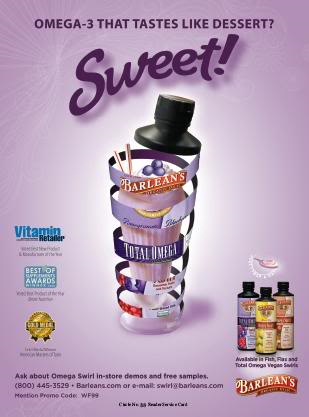 Several others also oppose having a hard-and-fast ratio altogether because it’s simply impractical to use. Holtby notes that some nutrition scientists feel such a figure is “difficult to measure and implement” on a day-to-day basis and there are “flaws and limitations in applying a target ratio for assessing risk of disease.” In fact, the optimal ratio may vary by disease and its severity, and therefore shouldn’t be applied as a gold standard across the board.
Several others also oppose having a hard-and-fast ratio altogether because it’s simply impractical to use. Holtby notes that some nutrition scientists feel such a figure is “difficult to measure and implement” on a day-to-day basis and there are “flaws and limitations in applying a target ratio for assessing risk of disease.” In fact, the optimal ratio may vary by disease and its severity, and therefore shouldn’t be applied as a gold standard across the board.
Neil E. Levin, CCN, DANLA, nutrition education manager for NOW Foods, Bloomingdale, IL, adds some fodder to this argument. “A ratio of 4:1 reduces cardiovascular mortality by some 70% over the 15:1 ratio [in the modern diet]. Ratios over 10:1 have been shown to have negative impacts on asthma conditions, whereas ratios below 5:1 show benefits. Ratios of 4:1 do not lower reduced rectal cell proliferation in patients with colorectal cancer, whereas a ratio of 2.5:1 does,” he says. “The answer is to both reduce the amount of omega-6 in the diet and to increase the level of omega-3s. This can be done by controlling food intake and by taking appropriate supplementation.”
Michael Chubb of Bioriginal wholeheartedly agrees in terms of a proper EPA/DHA ratio, noting, “There are various condition-specific realities that might be better supplemented with a particular EFA formulation. Historically, the mass market just says, ‘Fish oil is great,’ and doesn’t even talk about the ratio of EPA to DHA or the benefits of either. But the market, finally in 2009, is finally getting it.” He notes that EPA, for example, has been studied for its specific effects on mood and thus the EPA/DHA ratio should be considered when interested in this benefit.
And, are omega-9s in the picture? According to Dawn Jarvis, director of education for Garden of Life, Magnolia Park, FL, omega-9s are abundant fatty acids in nature and in our diets through animal fats and vegetable oils (such as olive oil). “They are also not considered essential because our bodies can make omega-9s from unsaturated fat in our bodies. Omega-9 fatty acids can be used by the body as a substitute for omega-3s or 6s if these essential fats are not present. However, omega-9s really aren’t an ideal replacement for 3s and 6s, and the body will eventually suffer from this.”
That’s not to say they aren’t important in their own right—especially given the success of the Mediterranean diet. One omega-9, oleic acid, “provides its own benefits. Oleic acid protects the integrity of the inner lining of arteries, reducing the risk for atherosclerosis. There is also evidence that it reduces the risk for certain kinds of malignancies,” says Herb Joiner-Bey, N.D., medical consultant for Barlean’s Organic Oils, Ferndale, WA. On the cholesterol front, it is said to raise HDL and lower LDL cholesterol.
But again, as Gene Bruno, MS, MHS, consultant to Jarrow Formulas, Los Angeles, CA, and dean of academics at Huntington College of Health Sciences, points out the body can make oleic acid as long as it has enough LA (omega-6) and ALA (omega-3), if it’s not consumed through dietary sources.
Get to the Source
One cannot discuss omegas without talking about differences in sourcing. It should be said upfront that the topic of plant versus fish omegas is a sticky one, with many companies very passionate about the benefits of each (and rightly, so). But, each source has unique attributes and benefits. For example, a recent study found fish (a source of EPA/DHA) and walnuts (a source of ALA) each help heart health, but in different ways (see WholeFoods, July 2009, p. 10).
In fact, many companies build omega products around the fact that consumers can benefit from both plant and fish-sourced omega-3s. Notes Joiner-Bey of the Barlean’s line, “We can skillfully use flaxseed oil, fish oil or both to meet people’s health needs based on our understanding of how well ALA is converted into EPA and DHA, as well as the proven advantages of one over the other for specific health issues.”
This speaks to the previously made point that different people (with varying health conditions) have unique requirements of omegas. Joiner-Bey notes that women of reproductive years, for example, “can convert ALA to EPA and DHA more efficiently than any other segment of the human population.” But, he says, “Pregnant or nursing women want to enhance DHA to give their children a boost.” And using flaxseed oil and fish oil in appropriate dosage is appropriate for most health condition, Joiner-Bey feels.
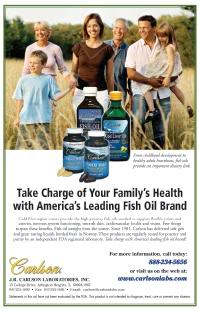 It’s fair to say that there are a variety of helpful plant sources like chia, hemp, pumpkinseed, flaxseed, the branded Salba Salvia hispanica L., walnuts and certain green vegetables. And again, the source offers something unique, though some benefits are ubiquitous. For example, flaxseed oil contains both LA and ALA in appreciable amounts—and has great benefits. Clow explains that these fatty acids are necessary for the structural integrity of cell membranes. She adds that when converted to non- or anti-inflammatory prostaglandins and leukotrienes in the body, supplementation with flaxseed oil increases the ratio of EPA/DHA to AA (3, 4). “ALA has also been reported to suppress the production of interleukin-1, tumor necrosis factor, leukotriene B4, and oxygen free radicals by polymorphonuclear leukocytes and monocytes (5). There is some evidence that ALA from flaxseed oil might have anti-tumor effects, possibly by increasing peroxidation of fatty acids in tumor cell membranes, or by altering the balance of prostaglandin production away from tumor-promoting prostaglandins of the E2 series (6),” she says.
It’s fair to say that there are a variety of helpful plant sources like chia, hemp, pumpkinseed, flaxseed, the branded Salba Salvia hispanica L., walnuts and certain green vegetables. And again, the source offers something unique, though some benefits are ubiquitous. For example, flaxseed oil contains both LA and ALA in appreciable amounts—and has great benefits. Clow explains that these fatty acids are necessary for the structural integrity of cell membranes. She adds that when converted to non- or anti-inflammatory prostaglandins and leukotrienes in the body, supplementation with flaxseed oil increases the ratio of EPA/DHA to AA (3, 4). “ALA has also been reported to suppress the production of interleukin-1, tumor necrosis factor, leukotriene B4, and oxygen free radicals by polymorphonuclear leukocytes and monocytes (5). There is some evidence that ALA from flaxseed oil might have anti-tumor effects, possibly by increasing peroxidation of fatty acids in tumor cell membranes, or by altering the balance of prostaglandin production away from tumor-promoting prostaglandins of the E2 series (6),” she says.
Other grains, chia (Salvia hispanica) as well as the branded Salvia hispanica L. (Salba) are gaining traction in the industry. Says Dean Mosca, president of Proprietary Nutritionals, Inc., Kearny, NJ (supplier of Benexia chia), “Use of chia-derived omega-3 in food applications will serve to balance the ratio of omega-3 to omega-6. Chia contains four parts omega-3 to one part omega-6. Chia oil has a higher percent of omega-3 than any other omega-3 oil.”
Many companies feel that this grain is unique in its nutritional breakdown aside from essential fatty acids. Information from Core Naturals of Winter Springs, FL (supplier of Salba) explains its grain offers 212 mg/g of protein per serving, 92.4 mg/12 g of calcium per serving, and is rich in fiber, antioxidants, folate, magnesium, vitamin C, iron and other nutrients.
Let’s return to the conversion issue. Some studies show healthy adults may only convert ALA to EPA in fairly small ranges (5–10% for EPA and 2–5% for DHA), though the number varies by gender, age, lifestyle and overall health. Some estimates are higher in the 20% range, according to Rakesh Kapoor, Ph.D., director of science and technology at Bioriginal.
But, Brenda Watson, president and founder of ReNew Life Formulas, Clearwater, FL, brings up the point that “many people, however, are lacking in the necessary enzymes to convert ALA into EPA and DHA, therefore not reaping all the health benefits available. Fish oil, on the other hand, has EPA and DHA in it and, therefore, does not need to go through a metabolic process in order to be utilized.”
Stuart Tomc, national educator for Nordic Naturals, Watsonville, CA, adds to the list of problems with ALA conversion. “Some of the vitamins and minerals needed by this pathway for conversion are B6, vitamin C, zinc and magnesium, which have been shown to be deficient in the population, making conversion even less efficient for most. Saturated fats and trans fats have been found to inhibit conversion and data show that these fats are consumed in high quantities in Western diets.”
Therefore, many feel if you who want the specific benefits of EPA and DHA, go straight to the source with fish oils. Levin offers some other reasons why: “EPA can readily convert into DHA, but you need a certain level of EPA in the body before that conversion to DHA will occur. So with fish oils providing pre-formed EPA and DHA, you will definitely get more bang for the buck, taking far less in liquid or capsules to get similar body levels of EPA or DHA. But that doesn’t mean that ALA is useless; far from it.”
Quality issues. It should be noted that fish oils vary widely in quality, particularly with respect to what consumers can buy at Wal-Mart versus a natural products store. It’s important this distinction be made to consumers, given apprehension about toxins and mercury content (which may diminish protective effects against heart disease). Bruno explains that this issue is definitely on consumers’ radars: “A well-publicized January 2001 federal advisory regarding methylmercury contamination in certain fish species made the public aware that their fish oil supplements are also subject to excessive levels of mercury, a neurotoxic heavy metal (7), as well as polychlorinated biphenyls (PCBs) (8), toxic organic compounds. Consequently, it is important to choose ‘clean’ fish oil supplements.”
Adds Holtby, “It’s important to know the source and the manufacturer to ensure that quality control steps are in place to guarantee a high-quality fish oil product. Poor-quality fish oil does not function in the body as well as high-quality fish oil, most likely because it is oxidized and contains little omega-3 (which is why the price is low).”
 He explains that high-quality fish oil suppliers purify the oils to remove other fats such as saturated fat. And, natural filtering methods, molecular distillation and other processes remove heavy metals, PCBs and other toxic elements. “The process creates very high-quality oil that can be used in omega-3 dietary supplements and functional food ingredients. It allows consumers to safely benefit from the health-enhancing effects delivered through fish oil,” Holtby says.
He explains that high-quality fish oil suppliers purify the oils to remove other fats such as saturated fat. And, natural filtering methods, molecular distillation and other processes remove heavy metals, PCBs and other toxic elements. “The process creates very high-quality oil that can be used in omega-3 dietary supplements and functional food ingredients. It allows consumers to safely benefit from the health-enhancing effects delivered through fish oil,” Holtby says.
Also, stress that freshness is critical, as EPA/DHA will oxidize quickly and become rancid if certain precautions aren’t taken. Says Murray of Xsto Solutions, “Oxidation can occur prematurely and decrease the effectiveness of the original material. It’s important to know and trust the source of your ingredient material going into the finished product(s).”
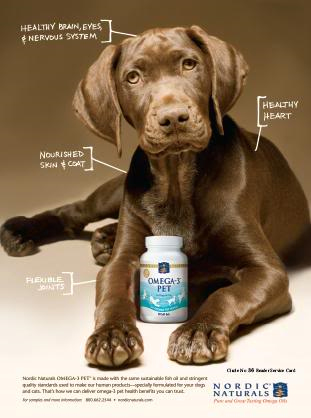 Responsible companies use natural stabilizers and antioxidants for product stability and less chance of oxidation. For example, Ascenta Health of Dartmouth, NS, Canada recently introduced a new green tea-based antioxidant for its fish oils. “This is unique to our NutraSea line of fish oils and makes our product 40% more stable against oxidation…For consumers this means fresher, better tasting products that do not develop any fish taste or smell,” says Marc St-Onge, the firm’s president.
Responsible companies use natural stabilizers and antioxidants for product stability and less chance of oxidation. For example, Ascenta Health of Dartmouth, NS, Canada recently introduced a new green tea-based antioxidant for its fish oils. “This is unique to our NutraSea line of fish oils and makes our product 40% more stable against oxidation…For consumers this means fresher, better tasting products that do not develop any fish taste or smell,” says Marc St-Onge, the firm’s president.
With respect to other oils, companies are working on ways to improve absorption. Chubb of Biorginal notes that most oils are in an emulsified format. “When oils hit your stomach, your body has to work pretty hard to digest that fat. When you emulsify essential fatty acids, your body is much more capable of quickly digesting that fat to get the active out of the oil,” Chubb explains. “Speed and depth of DHA absorption in the bloodstream happens quicker and lasts longer when taken in an emulsified format versus a softgel or by spoon.” In fact, 2007 research indicates the improved absorption of DHA could be as high as 60%; non-emulsifed oils reduced EPA and DHA absorption by 33.6% and 44.3%, respectively (9).
For this reason, companies like Barlean’s (which offers a smoothie-like version of emulsified oil) believe this format is well suited for those who may not be able to absorb omegas properly such as the elderly and those with digestive issues.
Omegas Resource Center
The past few years have been especially fruitful with positive data about the health benefits of omegas—and the media has taken notice with favorable articles. But, it’s easy to get over-saturated, and even easier to forget the latest findings when consumers ask specific questions about benefits. The following section is intended to highlight some of the most important and compelling recent research on essential fatty acids. And, we hope retailers will save this section and keep it handy for staff education about the importance of omegas.
Heart health. Studies have found a distinct relationship between omega-3 fatty acid intake and a reduced risk of developing (or dying from) coronary heart disease (10). The reason why, according to Holtby, is that long-chain omega-3 fatty acids help “reduce platelet aggregation (stickiness), improve endothelial function and arterial flexibility, improve blood and oxygen supply to heart, lower triglyceride levels, and lower blood pressure by vasodilation and promotion of sodium excretion.”
Other interesting research has supported the benefits of taking fish oil along with statins for those at risk of heart disease. Statins are known to lower cholesterol by inhibiting an enzyme called HMG-CoA reductase; fish oil also is said to accomplish this feat, too. St-Onge points to data (11) indicating that “when fish oils are added to statin therapy, there is a greater overall decrease in cholesterol and a greater improvement in cardiovascular disease protection.”
The benefits of omega-3s for heart health aren’t just for fish oil. A 2007 study indicated chia seeds may help lower triglycerides and bad cholesterol (12). And, another study on type-2 diabetics found reduced cardiovascular risk factors in those who consumed 37 grams/day of a branded grain (Salba) for 12 weeks.
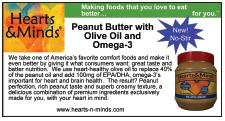 Retailers must be sure not to give the impression that omegas are a fail-proof safety net for heart health. Rather, according to very intriguing research published just a couple of months ago, it must be consumed along with a healthy diet. In fact, eating too many fatty foods can block the cardioprotective effects of fish oil (13). Says Kapoor, “The Western practice of increasing the uptake of selective healthy ingredients without improving the overall diet is not going to help in improving overall health.”
Retailers must be sure not to give the impression that omegas are a fail-proof safety net for heart health. Rather, according to very intriguing research published just a couple of months ago, it must be consumed along with a healthy diet. In fact, eating too many fatty foods can block the cardioprotective effects of fish oil (13). Says Kapoor, “The Western practice of increasing the uptake of selective healthy ingredients without improving the overall diet is not going to help in improving overall health.”
Childhood diabetes. Some preliminary research offers evidence that the more omega-3s young children eat, the less likely they are to develop type-1 diabetes. Such children (n = 1,770) had a sibling or a parent with the disease and were at risk for developing diabetes (14).
Mental health and behavior. Depression is on the rise and, according to Holtby, there may be a link to omega-3 deficiency: “Neurons that are starved for omega-3s scramble both dopamine (a chemical messenger that works in the frontal cortex) and serotonin (another chemical messenger that can regulate the brain’s stress response), and fats also help prevent inflammation.”
St-Onge also believes that targeting inflammation (which omega-3s are known to do) is an important way of addressing depression symptoms (lack of appetite, lack of interest, sluggishness). He adds, “The notion that inflammation causes depression is strengthened by the co-morbidity of depression with inflammatory disorders such as coronary-heart disorder, multiple sclerosis, inflammatory bowel disease and rheumatoid arthritis,” he says. This theory is spelled out in a 2009 paper on the topic (15).
Omegas are not only said to help those with depression; evidence suggests that they may benefit those with behavioral disorders, neurodegenerative diseases and mood problems. Important findings from some of the many 2009 published articles include the following:
- In a study of 120 middle-aged women with mild psychological distress and depression, those who took ethyl-EPA (1.05 g) supplementation for eight weeks improved more than those taking a placebo (16). Says Kapoor, “It is an important study as depression and psychological distress is common in menopausal women and affects the productivity and quality of life in these women. EPA is a safe choice for the treatment of the symptoms.”
- One article explains how a DHA metabolite (NPD1) protects brain cells and the photoreceptor cells in the retina by suppressing certain forms of cell injury that lead to neurodegenerative diseases (17).
- In a study of 37 children with symptoms of attention deficit and hyperactivity disorder (ADHD), those who were given an omega-3 fatty acid supplement had statistically significant improvement for attention and self-control (18). Research from a separate group found that certain children with ADHD experienced a “meaningful reduction of ADHD symptoms” after taking omega-3/-6 fatty acids for six months (19).
- Much data support the use of supplemental DHA during pregnancy and nursing to support the mental development of children. In March, WholeFoods reported on a study in which premature babies given high doses of DHA had better memory, problem-solving skills and language development than those who did not. The results were especially prominent among girls. And, 2003 research indicated that four-year-olds whose mothers took supplemental cod liver oil during pregnancy had better mental process scores than other children (20).
|
New omega products and some yet to come. • Ascenta will offer a vegetarian/vegan EFA liquid (with EPA, DHA and GLA) and a concentrated fish oil-based liquid with EPA, DHA and GLA. Companies are making new products in the “tasty omegas” arena. This includes Rainbow Light (Gummy Omegalicious), Nordic Naturals (Nordic Omega-3 Gummies, Tangerine), Flora Health (BIJA omega-3 chocolate truffles and 3.6.9 Oil Blends that can be added to recipes), Bioriginal (Smooth and Creamy Omega Emulsions; BioPureDHA chewable softgels; and OmegaShakers Milled Flaxseed Breakfast & Seasoning Toppers), Garden of Life (Oceans Kids DHA Chewables), Barlean’s (Omega Swirls creamy smoothie in naturally flavored fish oil and flax oil), Jarrow Formulas (Yum-Yum DHA Chews), Solgar (Lit’l Squirts Chewable DHA Chewie-Gels) and NOW Foods (chewable DHA capsules). Several companies also are making strides in the condition-specific formulas category such as Bioriginal, Nordic Naturals, Natural Factors (CardiOmega-Q10), Garden of Life (Oceans 3 Better Brain, Oceans 3 Healthy Hormones, OmegaXanthin), ReNew Life (Norwegian Gold Ultimate Fish Oils offers some with vitamin D3, peppermint oil and lipase), NOW Foods (high-quality omega products from various sources and some combinations) and Soft Gel Technologies, Inc. (high-quality fish oil capsules and encapsulated vegetarian DHA and can make custom formulations and blends). |
Last, Murray of Natural Factors cites 2003 research in which supplementation with EPA aided women with borderline personality disorder (BPD, a condition characterized by instability of interpersonal relationships, self-image and mood). He explains that women given one gram of the supplement for eight weeks had less-severe feelings of depression and aggression (21). “The authors of the study went so far as to conclude that EPA may be a safe and effective form of primary therapy for women with moderately severe borderline personality disorder,” Murray says, adding, “The significance of this study is profound, given that an estimated six million people in the United States are believed to suffer from symptoms of BPD.”
Anti-tumor. There are many forms of cancer and everyone’s condition is different, but some preliminary research indicates that omega-3 DHA may offer some benefits for those with cancer. A 2009 small animal study (22) indicated that DHA may “reduce the size of tumors and enhance the positive effects of the chemotherapy drug cisplatin, while limiting its harmful side effects,” says Tomc of Nordic Naturals. Also this year, a meta-analysis of 22 years of data offered evidence that omega-3 and fish intake were associated with reduced colon and rectum cancer risk (23).
Weight control. Some evidence suggests that omega-3s may be beneficial for satiety. Blood analysis conducted during a 2008 study of 232 overweight individuals found that those who took 1,300 mg of omega-3s after meals experienced a reduction in appetite while on a low-calorie diet (24). Chia and Salba also are said to promote satiety.
Sports nutrition. New research indicates that athletes may have 40% better performance and recovery when taking an omega-3/-6/-9 combination (Udo’s Oil from Flora Health). Says Erasmus, “Cell receptors work more effectively when our cell membranes are rich in essential fatty acids, especially omega-3. The results are akin to the use of steroids, but oils are legal and have only positive side effects.”
Eye health. It’s well known that omega-3s benefit retinal development in infants. But new research, says Joiner-Bey, is looking at how they can benefit seniors suffering from age-related macular degeneration and those with dry eye syndrome (25).
Skin health. The EPA in fish oil may have numerous benefits for skin health, says St-Onge, such as UV protection, acne reduction, collagen protection, enhanced wound healing, wrinkle prevention and treating/preventing inflammatory conditions like psoriasis, atopic dermatitis and eczema (26).
Future research. It is important for industry to not become complacent with the amount of literature we already have on file for omegas. There is still much we don’t know about them. For example, several experts interviewed for this article feel that additional research is needed on the specific effects of DHA and EPA as well as how best to use them in combination. In addition, St-Onge feels “Further research should also be done on maximum doses of EPA and DHA and whether the benefit obtained from one fatty acid is blocked by a high dose of the other.”
Watson of ReNew Life agrees, adding, “Knowing the correct ratio of omega-6 to omega-3 for health conditions is another area that could use more scrutiny.”
And, many researchers want additional unbiased research comparing the benefits of ALA and EPA/DHA (as well as their clinical markers). Erasmus hopes such research will be conducted in humans so as to better understand conversions rates. “I would like to see work that confirms or disproves my hunch that the greatest issue regarding omega-3s is not conversion rate, and not even nutrition (although both play a small role), but simply the fact that most of the population does not get enough starting material (ALA) to do enough conversion. Since conversion is 10% or less, one would need to take at least 10 times more ALA (which is in keeping with the fact that we need about 19 times more food foundation oil than supplement) than EPA plus DHA.”
 Are We Getting Through?
Are We Getting Through?
Given the wealth of positive research on omegas, surely we’re getting through to the medical community, right? Says Murray of Natural Factors, “The evidence is overwhelming. A physician would have to have a considerable bias or have his or her head so deep in sand to not agree that supplementing the diet with long chain omega-3 fatty acids from fish oils is one of the most important health practices of today.”
And, Kapoor adds that more and more medical schools are teaching students about alternative therapies and dietary supplements, including omega-3s.
But, don’t get too comfortable. As Murray of Xsto Solutions notes, the medical community “has slowly been warming up to omegas and is now supporting their use for prenatal and cardiovascular patients. It would be nice to see the medical community embrace rather than accept omegas.”
Holtby agrees with this sentiment. He explains that the medical community has conducted numerous clinical trials that support the efficacy of dietary and supplemental omega-3 for improving several medical conditions. “However, it doesn’t fully embrace fish oil’s positive effects as a buffer against these conditions,” he says. “Still, the evidence is hard to deny, and many are unwilling to put their health on hold while waiting for the medical community to catch up.”
Levin notes that physicians are more inclined to tell patients to eat more fish than to take a fish oil supplement. “That is a shame, since fish oils do not share the safety problems of heavy metals associated with fish meat; unlike fish eaten as a food, fish oil supplements tend to always pass toxic metal testing for mercury, cadmium, arsenic, etc., because the oil does not tend to accumulate the metals as fish bodies do. Unfortunately, some brands may market negatively and cast suspicion on other brands. In general, fish oil supplements are safe; and certainly far safer than eating a piece of fish.”
In addition, proper usage and the mechanism behind the benefits also are not well understood in the medical community, says St-Onge. “I feel the industry needs to develop better research and marketing tools for physicians regarding contraindications, side-effects and proper dosages for EPA and DHA.” He feels that doctors should be aware of any factors that affect bioavailability and absorption of EPA and DHA with respect to digestive disorders.
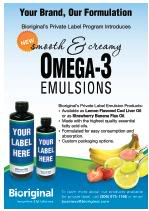 What can we do as an industry to make a deeper dent? Bruno says stores have an important role here. “In particular, within their communities, retailers can conduct mailings to make contact with doctors (especially cardiologists) providing copies of research on omega-3s (such as the new Harvard School of Public Health study) as well as marketing literature explaining the advantages of specific brands and/or processing used by those brands.”
What can we do as an industry to make a deeper dent? Bruno says stores have an important role here. “In particular, within their communities, retailers can conduct mailings to make contact with doctors (especially cardiologists) providing copies of research on omega-3s (such as the new Harvard School of Public Health study) as well as marketing literature explaining the advantages of specific brands and/or processing used by those brands.”
This is a great point, especially since, as van der Meulin of Originates points out, “prescription fish oil LOVAZA is set to hit annual sales closing in on $1 billion in the U.S. heart health market, in spite of its high price, environmentally insensitive packaging and similarity to non-prescription offerings.” Retailers shouldn’t hesitate to explain their offerings to their community, and why doctors should feel confident about their brands.
Speaking of communities, industry can afford to do more to educate consumers. Says Tomc, “The population is still at risk for essential fatty acid deficiency and must understand that these fats need to be consumed daily for optimal health. More education for pregnant women, children, elderly and even people’s pets must continue.”
We’ve done a good job with fish-based products, says Mosca, but we must continue to highlight other options, too. “Most consumers are now aware that omega-3s are in fish (they used to know fish as ‘brain food’), but sadly, many consumers just don’t like to eat it, nor do they like the fishy aftertaste of many marine-derived omega 3 supplements. We are coordinating efforts with our partners and our South American grower to ensure that consumers understand they can obtain the same qualitative benefits of chia-derived omega 3 ALA.”
Time educating consumers is time well spent, says Watson. “It is the key to knowing how to properly take care of your body. Although there has been a lot of information flooding not only the natural health markets, but also mass markets about the health benefits of omegas there could always be more…The more information consumers have to make an informed decision about their health—the better.” WF
References
- Women to Women Health Clinic, “What’s the Difference between Omega-3s, 6s and 9s,” www.womentowomen.com, accessed July 22, 2009.
- University of Maryland Medical Center, “Gamma-Linoleic Acid,” www.umm.edu/altmed/articles/gamma-linolenic-000.05.htm, accessed July 22, 2009.
- L.T. Bloedon and P.O. Szapary, “Flaxseed and Cardiovascular Risk,” Nutr. Rev. 62, 18–27 (2004). 4. D.C. Nordstrom, et al., “Alpha-Linolenic Acid in the Treatment of Rheumatoid Arthritis,” Rheumatol. Int. 14, 231–234 (1995).
- K. Prasad, “Dietary Flax Seed in Prevention of Hypercholesterolemic Atherosclerosis,” Atheroschlerosis, 132, 69–76 (1997).
- L.U. Thompson, et al., “Flaxseed and its Lignan and Oil Components Reduce Mammary Tumor Growth at a Lage Stage of Carcinogenesis,” Carcinogenesis, 17. 1376–1376 (2006).
- J.A. Greenberg, S.J. Bell and W.V. Ausdal, “Omega-3 Fatty Acid Supplementation during Pregnancy,” Obstet. Gynecol. 1 (4),162–169, (2008).
- Z. Usydus, “Study on the Raw Fish Oil Purification from PCDD/F and dl-PCB-Industrial Tests,” Chemosphere, 74 (11), 1495–1501 (2009).
- I. Garaiova, et al., "A Randomised Cross-Over Trial in Healthy Adults indicating Improved Absorption of Omega-3 Fatty Acids by Pre-Emulsification," Nutr. J. 6 (4), 1475– (2007).
- F.B. Hu, “Fish and Omega-3 Fatty Acid Intake and Risk of Coronary Heart Disease in Women,” JAMA 287 (14), 1815–1821 (2002).
- R.E. Duncan, et al., “Regulation of HMG-CoA Reductase in MCF-7 Cells by Genistein, EPA, and DHA, alone and in Combination with Mevastatin,” Cancer Lett. 224 (2), 221–228 (2005); U.N. Das, “Essential Fatty Acids as Possible Mediators of the Actions of Statins, “ Prostaglandins Leukot. Essent. Fatty Acids, 65 (1), 37–40 (2001); C. Bouzan, et al., “A Quantitative Analysis of Fish Consumption and Stroke Risk,” Am. J. Prev. Med. 29 (4), 347–352 (2005); L.W. Dobrucki, “Statin-Stimulated Nitric Oxide Release from Endothelium,” Med. Sci. Monit. 7 (4), 622–627 (2001).
- R. Ayerza, Jr, and W. Coates, “Effect of Dietary Alpha-Linolenic Fatty Acid Derived from Chia when Fed as Ground Seed, Whole Seed and Oil on Lipid Content and Fatty Acid Composition of Rat Plasma,” Ann. Nutr. Metab. 51 (1), 27–34 (2007).
- K.B. Shah, et al., “The Cardioprotective Effects of Fish Oil During Pressure Overload Are Blocked by High Fat Intake. Role Of Cardiac Phospholipid Remodeling,” Hypertension, July 13, 2009, Epub ahead of print.
- J.M. Norris, et al., “Omega-3 Polyunsaturated Fatty Acid Intake and Islet Autoimmunity in Children at Increased Risk for Type 1 Diabetes,” JAMA, 298 (12), 1420–1428 (2007).
- M. Maes, et al., “The inflammatory & Neurodegenerative (I&ND) Hypothesis of Depression: Leads for Future Research and New Drug Developments in Depression,” Metab. Brain Dis. 24 (1), 27–53 (2009).
- Lucas, et al., “Ethyl-Eicosapentaenoic Acid for the Treatment of Psychological Distress and Depressive Symptoms in Middle-Aged Women: A Double-Blind, Placebo-Controlled, Randomized Clinical Trial,” Am. J. Clin. Nutr. 89 (2), 641–651 (2009).
- N.G. Bazan, “Cellular and Molecular Events Mediated by Docosahexaenoic Acid-Derived Neuroprotectin D1 Signaling in Photoreceptor Cell Survival and Brain Protection,” Prostaglandins Leukot Essent Fatty Acids. Jun 9, 2008, Epub ahead of print.
- S.A. Belanger, et al., “Omega-3 Fatty Acid Treatment of Children with Attention-Deficit Hyperactivity Disorder: A Randomized, Double-blind, Placebo-Controlled Study,” Paediatr. Child Health,14 (2), 89–98 (2009).
- M. Johnson, “Omega-3/Omega-6 Fatty Acids for Attention Deficit Hyperactivity Disorder,” J. Atten. Disord. 12 (5), 394–401 (2009).
- I.B. Helland, “Maternal Supplementation with Very-Long-Chain n-3 Fatty Acids During Pregnancy and Lactation Augments Children's IQ at 4 Years of Age,” Pediatrics, 111 (1), e39–44 (2003).
- M.C. Zanarini and F.R. Frankenburg, “Omega-3 Fatty Acid Treatment of Women with Borderline Personality Disorder: A Double-Blind, Placebo-Controlled Pilot Study,” Am. J. Psychiat. 160 (1) 167–169 (2003).
- M.M. El-Mesery, et al., “Chemopreventive and Renal Protective Effects for DHA,” Cell Division, 4, 6 (April 2, 2009).
- M.N. Hall, et al., “A 22-Year Prospective Study of Fish, n-3 Fatty Acid Intake, and Colorectal Cancer Risk in Men,” Cancer Epidemiol Biomarkers Prev. 17 (5), 1136–1143 (2008).
- D. Parra, et al., ”A Diet Rich in Long Chain Omega-3 Fatty Acids Modulates Satiety in Overweight and Obese Volunteers During Weight Loss,” Appetite, 51 (3), 676–680 (2008).
- T. Cakiner-Egilmez, “Omega 3 Fatty Acids and the Eye,” Insight, 33 (4), 20–25 (2008). 26. H.H. Kim, et al., “Eicosapentaenoic Acid Inhibits UV-Induced MMP-1 Expression in Human Dermal Fibroblasts,” J. Lipid Res. 46 (8), 1712–1720 (2005); J.C. McDaniel, et al., “Omega-3 Fatty Acids Effect on Wound Healing,” Wound Repair Regen.
- (3), 337–345 (2008).
Published in WholeFoods Magazine, Sept. 2009

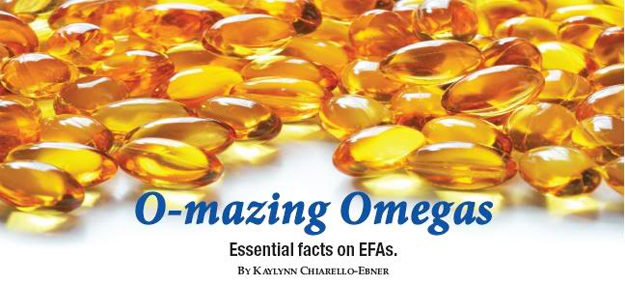
 Select Omega Offerings
Select Omega Offerings







